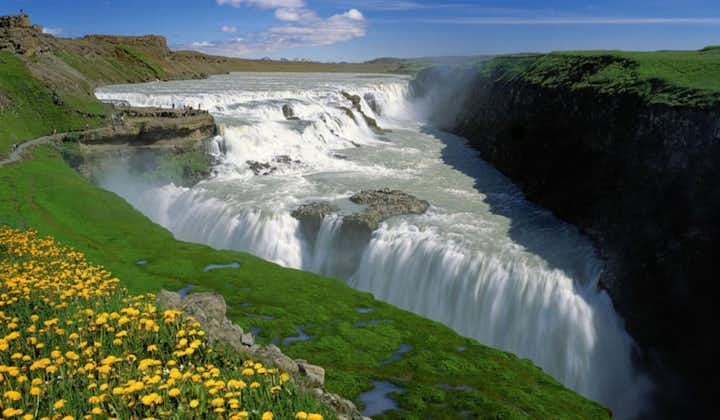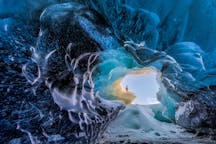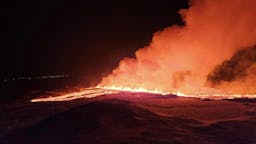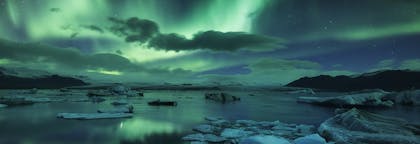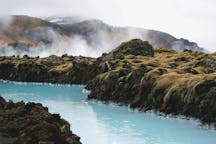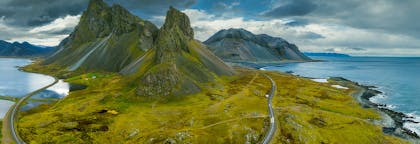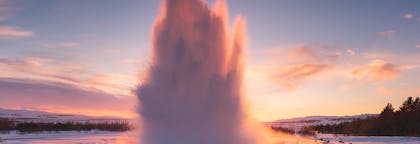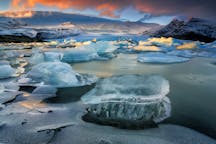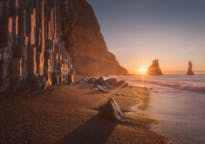Tour del Golden Circle en Minibús con Grupo Reducido y Traslado Desde Reikiavik
Descripción
Resumen
Descripción
Sube a bordo de un minibús para una visita guiada por el Golden Circle (Círculo Dorado), la experiencia en Islandia por excelencia. Esta excursión te llevará por las atracciones naturales más famosas de Islandia, sin las prisas ni las molestias de los grandes autocares. Vive una aventura por el Golden Circle en grupo reducido y disfruta de las vistas sonidos de esta región de fama mundial.
Esta visita guiada es perfecta para quienes quieran adentrarse de lleno en la cultura islandesa. No solo visitarás los lugares más destacados, sino que también aprenderás más sobre la música y cocina islandesas a lo largo del recorrido, lo que hace que este tour sea una experiencia verdaderamente única.
Te recogerán por la mañana en un pequeño pero cómodo minibús para comenzar la visita guiada. En primer lugar, te dirigirás al Sur de Islandia para hallar una pequeña joya oculta, la cascada de Faxi. Enclavada en un lugar tranquilo, no visible desde la carretera principal, Faxi es una cascada baja pero ancha, que recibe su nombre de las crines del caballo islandés.
Desde la pequeña Faxi, continuarás hasta alcanzar la impresionante e imponente cascada de Gullfoss. El río glacial de Hvita cae con una fuerza descomunal en un cañón de 32 metros, lo que da como resultado esta espectacular y bella cascada. Sin duda, una de las atracciones naturales más icónicas de Islandia. Si tienes suerte, puede que incluso veas un arcoíris que se extiende desde el cielo hasta las profundidades del cañón, por lo que tendrás ante ti una oportunidad fotográfica fantástica.
Posteriormente, visitarás el área geotérmica de Geysir. Ubicada en el valle de Haukadalur, el “Gran Geysir” llegó a ser un gran géiser, pues estuvo activo durante 10 000 años. Hoy día, duerme.
Aunque Geysir se encuentra actualmente inactivo, junto a él hay otro géiser llamado Strokkur que dispara chorros de agua a unos 15-20 metros de altura cada 5-10 minutos, más o menos. Así pues, vas a tener un montón de oportunidades para conseguir la foto perfecta de su estallido. Asegúrate de estar listo(a) para grabarlo cuando veas burbujear a Strokkur, señal inequívoca de que está a punto de entrar en erupción.
La última parada del Golden Circle será el Parque Nacional de Thingvellir, un lugar de gran importancia histórica y geográfica. En el año 930 se fundó allí el primer parlamento de Islandia, el Althingi, lo que lo convierte en el parlamento activo más antiguo del mundo. Además, en Thingvellir se separan las placas tectónicas de Eurasia y Norteamérica, y se pueden ver perfectamente las grietas y las fracciones de roca que atraviesan la región. Así, en este alucinante parque nacional tendrás la oportunidad de ser testigo de la división de dos de los continentes.
Durante el camino, tu guía te explicará todo sobre los lugares que irás visitando. También te introducirá en la cultura islandesa a través de su música y te dará a probar exquisiteces y bebidas islandesas. Ten listas tus peguntas, ya que tu guía experto estará encantado de responder a todas ellas.
Mientras viajas por los sitios de interés del Golden Circle, escucharás a algunos de los mejores músicos islandeses. Si te gusta la música, podrás encontrarla directamente en Spotify con el Wi-Fi gratuito del minibús. De esta forma, podrás revivir la experiencia cuando vuelvas a casa.
¡No te pierdas esta introducción única a Islandia y apúntate a esta fascinante excursión de un día!
Selecciona tus fechas para comprobar la disponibilidad y reserva ahora tu visita por el Golden Circle.
Incluido
Actividades
Qué llevar
A tener en cuenta
El almuerzo no está incluido, pero se hará una pausa para comer. Podrás comprar comida en los restaurantes de la zona si no has llevado tu almuerzo.
Reseñas de primera mano
Tours similares

Descarga la mayor plataforma de viajes a Islandia en tu teléfono para gestionar todo tu viaje en un solo lugar
Escanea este código QR con la cámara de tu teléfono y haz clic en el enlace que aparece para añadir la mayor plataforma de viajes a Islandia a tu bolsillo. Añade tu número de teléfono o dirección de correo electrónico para recibir un SMS o correo electrónico con el enlace de descarga.
